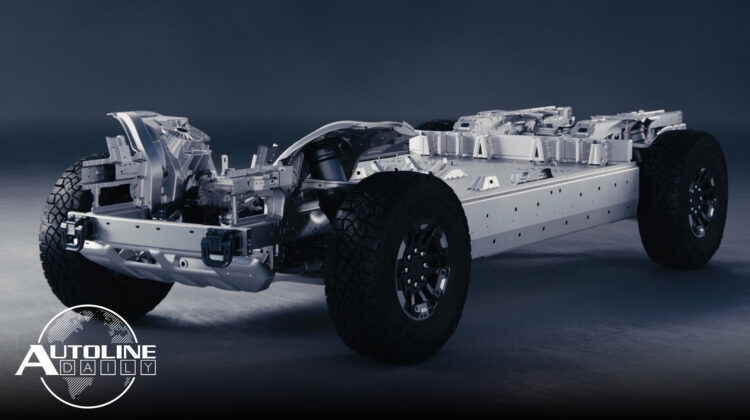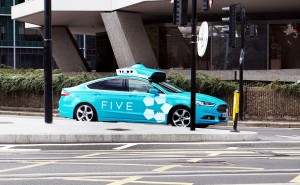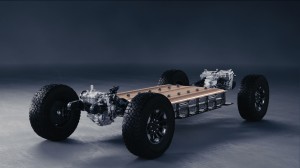
Listen to “AD #3302 – Why There’s Ethanol In Gasoline; More Info On GM’s Ultium Platform; Car Prices Are Causing Inflation” on Spreaker.
Follow us on social media:
Runtime:11:55
0:08 Car Prices Are Causing Inflation
0:57 Bosch Buys AV Start Up
1:36 Why There’s Ethanol in Gasoline
3:14 Big BMW X7 Gets Big Changes
4:41 Mercedes Prices the EQE
5:28 Jeep Stretches the Wagoneer Another Foot
7:08 Which Car Company Has the Most Employees?
8:22 More Info on GM’s Ultium Platform
Visit our sponsors to thank them for their support of Autoline Daily: Bridgestone, Intrepid Control Systems and Schaeffler.
This is Autoline Daily, the show dedicated to enthusiasts of the global automotive industry.
CAR PRICES ARE CAUSING INFLATION
Inflation in the U.S. is running at the highest rate in 40 years. One reason is that the prices of new and used cars have gone through the roof. And they are relatively important to how inflation is calculated. According to the Bureau of Labor Statistics, new and used cars account for about 9% of the Consumer Price Index, which is the inflation rate that always gets quoted. But new and used car sales fell last month. Carmax reported that used car sales fell more than 6% last quarter. And the website iSeeCars reports that the average used car price dropped about $600 in March. So we could see the inflation rate start to ease up a bit, if only because car prices are cooling off.
BOSCH BUYS AV START UP
They say that the commercial delivery market will be where autonomous vehicles really start to catch on. That’s why Bosch just bought a startup called Five. It’s an AV company based in the UK that was founded in 2016. It’s developing software and artificial intelligence solutions for AVs up to SAE Level 4. And it’s using a cloud-based development and testing platform for its software. Bosch is developing AV tech up to SAE Level 3 for private vehicles and it sees a big opportunity for Level 4 vehicles for logistics, which is why it went out and bought Five.
WHY THERE’S ETHANOL IN GASOLINE
Yesterday, President Biden ok’d the use of E15 gasoline. Any car made from 2001 onward can use E15, which is gasoline that contains 15% ethanol. By using more ethanol, that will stretch out supplies of gasoline which are in tight global supply because of Russia’s invasion of Ukraine. Using ethanol in gasoline is controversial and highly politicized, but we thought you’d like to know the background of how it even came into use. It goes back to the 1990 Clean Air Act when Congress mandated that the EPA had to come up with a fuel that would reduce smog and pollution in cities. So the EPA mandated the use of what is called oxygenated gasoline, that is, gasoline that has more oxygen in it. More oxygen means the fuel will burn more completely and cleaner. And ethanol has more oxygen in it. There was another oxygenate that the EPA allowed at the time called Methyl tertiary-butyl ether, or MTBE. But that turned out to be cancerous, so the EPA banned it. And that left ethanol as the only legal oxygenate that could be used, which is why we have ethanol in gasoline today.
BIG BMW X7 GETS BIG CHANGES
BMW’s big SUV, the X7, is getting some big changes for the 2023 model year. And like most new BMW’s it wears a big twin kidney grille. But also note how the headlamps and DRLs are split apart from each other with a thin strip of body color separating them. The interior, too, sees some big changes for the new model year. The front of the dashboard seems to cascade into the passenger’s laps and there’s a cool little design element over the front vents. It’s a pretty clean layout overall with not a lot of knobs and buttons and is highlighted by a large curved display that combines the instrument and infotainment screens into one unit. Power for U.S. versions comes from one of two engines. The first is an upgraded version of BMW’s 3.0L in-line 6-cylinder that now makes 375 horsepower, which is 40 more than before. The other is a 4.4L twin-turbo V8 that makes 523 horsepower in the M version or 630 horsepower for the Alpina, which does 0-60 in 4-seconds. Pricing in the U.S. starts a little under $79,000, including destination charges and goes up to $104,000 for the M version. The new X7 will start going on sale in August.
MERCEDES PRICES THE EQE
Mercedes announced pricing for its new EQE fully-electric sedan, at least for Europe. It starts just over 70,600 euros in Germany, which is about $76,500. The EQE is built on the same architecture as the EQS but is slightly smaller. It’s comparable in size to the CLS. The battery has 90 kWh of usable energy which provides up to 654 kilometers or 406 miles depending on the configuration. And that’s based on the WLTP cycle. The EQE, which goes on sale in the middle of the year, will be built in Germany for global markets and in China for the Chinese market.
JEEP STRETCHES THE WAGONEER ANOTHER FOOT
Speaking of new models, Jeep is coming out with a long-wheelbase version of the Wagoneer and Grand Wagoneer. They’re about a foot longer overall and feature a wheelbase of 130-inches, which is 7-inches longer than the standard model. That means it’s a little shorter than Ford or GM’s long-wheelbase SUVs, but it still has more cargo room than GM. The Wagoneer L offers 44.2 cubic feet of volume behind the third row of seats, which is an increase of 16.8 cubic feet over the short wheelbase. These will also be the first Stellantis vehicles to feature its new Hurricane engine. It’s a 3.0L twin-turbo, in-line 6 cylinder that comes in two outputs. In the Wagoneer L it produces 420 horsepower and 468 lb-ft of torque, while the Grand Wagoneer L gets a high-output version that makes 510 horsepower and 500 lb-ft of torque. No pricing has been released yet.
WHICH CAR COMPANY HAS THE MOST EMPLOYEES?
The auto industry is an amazing job-creating machine. But do you have any clue how many people work at the car companies? We were surprised when we looked at the numbers. General Motors, for example, has 157,000 employees around the world. That sounds like a lot, but it’s rather small compared to other car companies. While GM has 157,000 employees, Ford has 183,000. GM has so many fewer because it pulled out of so many global markets. But Stellantis makes Ford look puny. It has 281,000 employees, nearly 100,000 more than Ford. And Toyota puts them both to shame. It has 372,000 employees, or 90,000 more than Stellantis. But that’s nothing, Volkswagen has a staggering 672,000 employees, or 300,000 more than Toyota. Now, that includes VW’s joint venture partners in China, but even so, that’s a lot of people.
MORE INFO ON GM’S ULTIUM PLATFORM
GM is betting much of its electric future on its Ultium platform, a dedicated BEV architecture that affords GM a lot of flexibility. We know it will support everything from small crossovers to large vans for its new commercial division, BrightDrop. We learned more about the Ultium platform at our recent drive of the Hummer EV Edition 1, the most extreme Ultium vehicle so far. It features three 255 kW electric motors that combine for a little more than 1,000 horsepower. Hummer engineers told Autoline that the front motor features a mechanical locking differential and while the rear motors are in the same housing, they’re not linked by any gears. Software is used to spin the rear tires at the same speed, thus acting like a rear locker. We also know the launch version of the Cadillac Lyriq will have a single 255 kW motor driving the rear wheels. But based on initial renderings of the Lyriq’s Ultium platform, it will also be offered with AWD. That front motor could be another 255-kW unit, but GM has two other Ultium motors as well: a front-mounted 180 kW unit or a 62 kW all-wheel drive assist motor. Now let’s shift our focus to batteries. GM uses pouch cells that are stacked into the modules. The Hummer EV Edition 1 has 24 battery cell modules, which are stacked side-by-side in two layers and combine for 205 kWh of usable energy. And that provides the truck with 329 miles of range. Each module has a single cooling plate that’s fed by a liquid coolant system, which also goes to the motors and inverters. The Lyriq, on the other hand, will use a single layer side-by-side layout with 12 modules and 100 kWh of usable energy. It’s possible there could be other module layouts. Engineers said they tested other configurations, like turning the modules on their side. And we think that would make some sense, because otherwise, the smaller vehicles would still be quite wide. Engineers also told Autoline, the least amount of modules an Ultium vehicle will use is 10. And if we use the Hummer and Lyriq as a guide, a 10 module Ultium vehicle will have an 85-kWh battery pack.
MARK REUSS ON AUTOLINE AFTER HOURS
Ford is going to split into two business units, one for ICE and one for BEV. Renault is doing the same thing and CEO Luca de Meo says it’s even looking into spinning off the BEV unit as a separate company. So what will General Motors do? We’re going to pose that question to Mark Reuss, the president of GM, who will be our guest on Autoline After Hours. Don’t miss it. Join John and Gary tomorrow afternoon for a deep dive into GM’s EV strategy.
But that’s all for today, thanks for joining us.
Thanks to our partner for embedding Autoline Daily on its website: WardsAuto.com
Seamus and Sean McElroy cover the latest news in the automotive industry for Autoline Daily.











